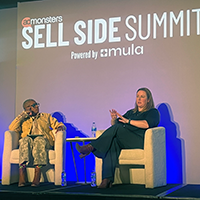Every industry undergoes change. It must adapt to a changing environment and find the right balance between those with a stake in it to not just survive but grow. The mobile subscription services space is no exception. Two years ago, few would have predicted that offers for ringtone and premium text services would become a multi-hundred million dollar business and for a while certainly one of Google’s top verticals. It is today the little known secret that powers a vast majority of social media monetization, especially for international traffic.
This growth, though, has come with its share of obstacles, and it has led to not just tension but legislative activity and even fines. The real challenge and this applies to any fast growing industry that involves multiple parties, especially large corporations, is communication and coordination. It is easy for one entity, and this includes everyone, to focus only on their needs without always thinking of the upstream and downstream consequences. Everything feels urgent and of the utmost importance, and when everything is urgent, it means decisions get made that don’t always make the most sense for the long-term health of the system. The past year and half has seen quite a few landmark changes to the mobile subscription marketing industry beginning with regulating the use of the word "Free." No less important, other changes have been more subtle and more subjective, such as disclosure language, placement, and size. During this growth process, T-Mobile even instituted a penalty process whereby they would withhold payment if too many complaints were generated. In the end, regardless of the change, they all stem from the same drivers, the customer.
Customer Satisfaction
Those who drive traffic and get paid on a performance basis might not always like the changes that get implemented, but the motivation behind them generally makes sense even if the execution doesn’t. The carriers in particular want to make sure those paying for the service understand what they bought and are happy with the service. The carriers earn I’m guessing in the neighborhood of $40 per user per month, and through the use of incentives they can keep these users for a year if not longer. If a user joins a third-party subscription service, the carrier might make $5 per user per month. In the $40 revenue scenario this is 12.5% boost, and it’s almost all profit, as it doesn’t have the servicing cost associated with their regular business. If the customer isn’t happy, though, it does. Now, instead of their representatives dealing standard questions, they must deal with things they don’t really know, issuing refunds, dealing with increased turnover, and losing their customers.
More than just the cost to adjust operations to deal with the influx of unhappy customers, the real concern even beyond the revenue is the impact to the brand. A company like at&t spends hundreds of millions of dollars per year on building its brand. The cost of litigation isn’t high, such as the settlement reached with the Florida Attorney General; the real cost is their potentially being known as the company that doesn’t do right by its clients. No amount of incremental revenue is worth that for them.
The Long Tail Challenge
Perhaps the biggest change to occur in the space in quite some time if not ever has happened recently. Verizon and Sprint decided in the summer, and have asked, with threat of non-payment, that no signups occur through carrier landing pages. To understand the significance of the change, we must understand the importance of search and the rules of search to the generation of new signups. Banners are tough, the inventory options limited; email is hit or miss. Search on the other, touches upon such a vast audience both through the keyword targeting and its syndication on content websites. It’s easy to go to Google.com, type in a phrase and think of that as the search experience, but especially for mobile subscription marketing, the actual experience comes more from users going to a content website, e.g., one that offers website layouts and seeing a ringtone ad through Google’s content syndication program AdSense. The reach of Google on tier 2 and tier 3 entertainment sites is astonishing, and among the best performing offers for Google and their publishers are the mobile subscription ones.
In the off-deck content syndication world, there are really only a handful of players at scale, whose efforts play an integral role in the mobile subscription marketing. It’s by no means a negative, but off-deck content brands are not well known by the end user. They don’t spend hundreds of millions on pure branding. For customers, the company that aggregates the content matters much less than the content offered. They are not brand sensitive. It’s like air travel and the reason that online travel agents like Expedia have done so well. Consumers care about the end destination and the price, not necessarily who takes them there. The value proposition of Expedia, bringing together all of the choices and helping chose the one that makes the most sense, has led to sites like it being responsible for the vast majority of all air travel bookings. The same holds true with the mobile subscription, e.g., ringtone world. The sites that have brought together the top off-deck providers into a single experience have dominated the acquisition of subscribers.
The typical user experience through search involves three steps. The first is a carrier landing page. It is a page that lists the carriers, generally in graphical format, has marketing message regarding the receipt of ringtones for enrollment, and prompts the user to click on their carrier. That takes them to page two, the cell submit page. Here, the user is asked to enter their phone number (think of this step like entering the travel destinations), and the site will see what carrier their number is actually going through and what services are available. Completion of the cell submit does not sign the user up for anything. Completion of that page will take them to the third step, the PIN submit. The user does not get signed up on the cell submit, but a text message is sent to the phone number they provided. That message contains a PIN number. Entering that PIN number on the PIN page and hitting submit will then sign them up for the service. It is this last page that is the equivalent of the check out page and is where the transaction occurs. Google has very specific rules regarding their advertising. The carrier landing pages are partially in response to those rules but also in response to lots of testing of conversion flows to see which makes it profitable to purchase traffic.
The changes by Verizon and Sprint interrupt this flow. It is the equivalent of American Airlines deciding that they won’t participate on Expedia or similar sites. If you are Southwest, and your brand revolves around being different, you can support this. For everyone else, it will mean a loss in business with users not going to their site. In the mobile scenario, users from those carriers will not sign-up for the service, and they won’t be heading to find the alternative, as in many cases, they don’t know an alternative. Verizon and Sprint want all signups to occur on the off-deck content provider’s page. This presents a potentially crippling change for two reasons. Sending users straight to the off-deck provider’s page lowers conversions. It will mean 30% less traffic from that alone. If it did work, people would do it now instead of the carrier landing pages. The second drop comes from how that change would restrict the end marketers. If this were American airlines, by working with Expedia, Travelocity, Orbitz, etc., for any airline query, they have the chance of getting a user through not just those sites but their own ad. If they stop working with them, now they have just one chance at that customer, who is going to head to one of the other sites anyway for the value they bring in aggregation. Put them together, and you have a loss of a minimum of 50% of the volume. Were the off-deck guys in the search business, creative solutions could mean instead of 50%, perhaps just 35%, but that would take a lot of effort.
Who Do You Follow
The changes by the carriers make perfect sense. They want to avoid what happened during the growth phase of the industry – complaints and potential brand degradation. Their legal teams then draft policy to avoid this. Their legal teams aren’t search marketers, aren’t performance marketers, and have no grasp of the intricacies driving the business. To them saying a) no carrier landing pages and b) all conversions must come from the off-deck content company’s site seems simple, elegant, and painless for all. They wouldn’t know the impact it has, and they have no process in place to even begin to understand it.
Private companies are really the low man on the totem pole of regulation. If we go up a level and look at the State Attorney General, in this Florida’s State Attorney General, we see a different set of guidelines than those required by the carriers. In the past, when changes were added by the state and by Google regarding language and opt-in placement, we discussed how the two didn’t always match up 100%. But, they were close enough, and while challenging from a conversion rate perspective, not insurmountable or unreasonable. These changes aren’t even close. The Florida Attorney General, who has taken the lead on compliance and collection, has no issue with carrier landing pages. And, unlike Google, they don’t require opt-in language on the cell submit page as no transaction occurs and no use of the data occurs. Where they spend a lot of time is on the PIN page, because the transaction takes place there. All jokes aside, if it is good enough for the Florida Attorney General, who has an entire division on this, you would think it should stand-up across all fronts.
Those doing the marketing along with those servicing the marketers face a double challenge. They often must take the financial risk, and when it comes to revenue generation, they sit at the bottom rungs of the ladder. We call it biting the hand that feeds you, because by making changes without involving the crucial players in the traffic acquisition, carriers will essentially see their volume come to a standstill. The message sent is one that says, we don’t want to be in this business, as opposed to saying, we care about our customers and we care about all excelling. It is in many ways like the days leading up to CAN-SPAM. Email showed us that you can’t operate functionally if all the pieces of the ecosystem aren’t talking and each piece has its own rules. Mobile subscription services are already dangerously close. Mobile subscription services are already dangerously close, but it’s not too late.



